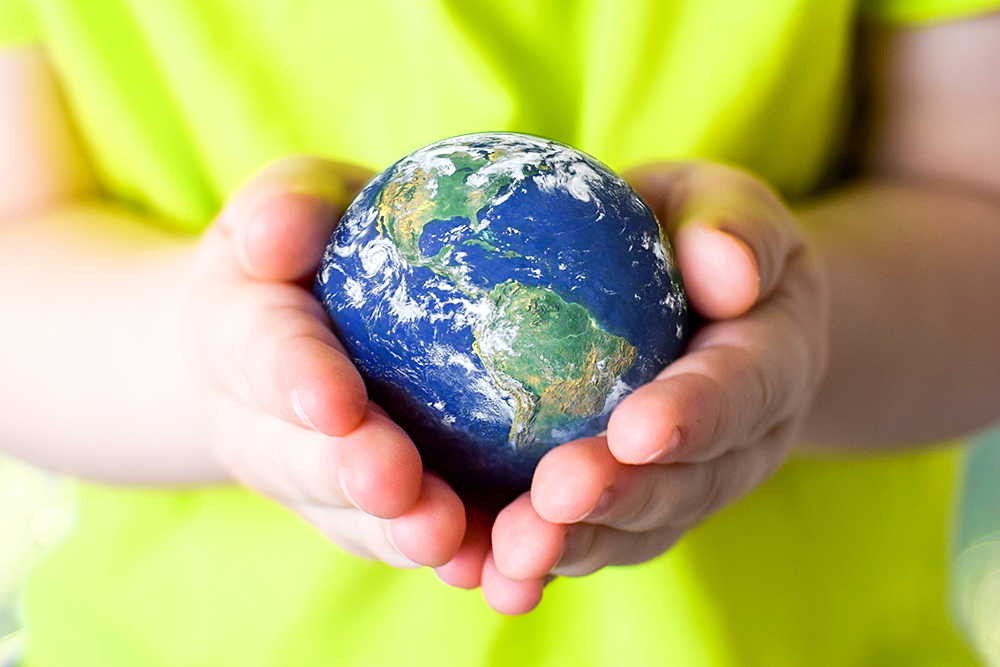
Every April millions of Americans devote a day to celebrating this blue and green marble we call home. The celebration known as Earth Day turns 50 this year, making now a perfect time to look back at how the day originated and what’s planned for this year.
Gaylord Nelson, a senator from Wisconsin, is widely credited with creating Earth Day, as he assembled a bipartisan coalition that promoted climate demonstrations across the country on April 22, 1970.
- New vehicles [1]
- Used vehicles [2]
An estimated 20 million people, roughly 10 percent of the country’s population at the time, packed parks, gathered in auditoriums and demonstrated in the streets for a healthier, more sustainable environment.
Two major events are credited with helping make Earth Day a reality. A substantial oil spill in Santa Barbara in January 1969 drew Nelson’s focus, while Cleveland’s heavily polluted Cuyahoga River catching fire later that year captured the public’s attention.
The Cuyahoga River fire in 1969 was far from the first time flames broke out on the waterway. It was, in fact, the 13th time the river went ablaze since the 1860s, according to historians. Time Magazine’s reporting on the Cuyahoga River fire described the river as so polluted it was “Chocolate-brown, oily, bubbling with subsurface gases.”
Heavy pollution had long plagued the river which winds past cities like Akron and Cleveland before emptying into Lake Erie. The Washington Post reported the city of Cleveland spent $100 million to clean up the river. That’s the equivalent of more than $700 million in 2020, according to calculations from the Bureau of Labor Statistics’ consumer price index.
It took 20 years before fish and insects would return to that portion of the river, the New York Times reported. Restoration efforts proved worthwhile, as water quality in the river substantially improved.
The efforts did not go unnoticed. The American Rivers conservation association named the Cuyahoga "River of the Year" in 2019, for recognition of "50 years of environmental resurgence."
But an oil spill that left a 35-mile oil slick off the coast of southern California proved to be the driving force behind Earth Day’s inception. Roughly 3 million gallons of oil poured into the Pacific Ocean after an explosion at one of Union Oil’s (now Unocal) offshore oil platforms.
The blast cracked the ocean’s floor in five places and took a month to seal. Roughly 1,000 gallons of oil per hour surged into the ocean during that time, according to the Los Angeles Times.
A waiver granted by the U.S. Geological Survey allowed Union Oil to operate the oil platform with a protective casing around its drilling hole that was 61 feet short of the federal minimum requirements at the time, according to the Los Angeles Times.
Earth Day falls on April 22 this year, and there are plenty of celebrations to mark the milestone.
If you’re planning to travel in April, consider a side trip to one of these Earth Day festivals:
- Earth Week, Santa Monica College, California: Celebrate the 50th anniversary of Earth Day with movie screenings, DIY workshops, guest lecturers and games.
- South Bay Eco Festival, Manhattan Beach, California: Starting at noon on April 25, this four-hour festival invites participants to shop for green products and services. Eco Cars, solar technology, hydroponic gardening, waste-free products and examples of eco design will be on display.
>
- Earth Day Climate Strike, Milpitas, California: Environmental advocates before Milpitas’ city hall to address climate change and to build support to address climate change issues locally.
- Bismarck Earth Day Festival, Bismark, North Dakota: Door prizes, free reusable tote bags, face painting and a scavenger hunt are among the activities planned at this family friendly event running from 4 to 7:30 p.m. on April 23.
- Earth Day in Townsend, Townsend Massachusetts: Starting at 8 a.m. on April 25, this all-day event features more than 100 nonprofit organizations and crafters/vendors.
- Earth Day 2020: A Celebration in Video, Art, Performance, and Song, Eckerd College, St. Petersburg, Florida: Videos, songs, art, live performances and a guided community meditation are among the events planned for the 50th anniversary of Earth Day. The event takes place on April 22.
- New Orleans City Park Earth Day Festival, New Orleans, Louisiana: This free, three-hour event starts at 2 p.m. on April 21 in the New Orleans Botanical Garden. Local businesses and non-profit organizations that contribute to an environmentally-conscious way of life will be present, and there will be activities for children, cooking demonstrations, live music, food trucks, yoga, raffle prizes and more. Afterwards, listen to the Louisiana Philharmonic Orchestra at Swing in the Oaks on the Goldring/Woldenberg Great Lawn.
- 30th Annual San Luis Obispo County Earth Day Fair, San Luis Obispo, California: Ride your bike, take the bus or carpool to this day of celebration, education, and activation. In addition to a car show and kids center, the event will feature dozens of nonprofit groups and businesses who share solutions to pollution, facts about climate change and practical advice for a greener lifestyle.
- EcoFest Encinitas, Encinitas, California: Check out the latest in clean transportation and housing and learn how to save energy, water, and money on the road to sustainability. Local environmental organizations will be on display, as well as sustainable businesses and local government agencies. Event takes place on May 17, starting at 10 a.m.
- Earth Day - The 50th Anniversary, Mentor, Ohio: Located in the city’s newest park, Springbrook Gardens Park, this event will host vendors selling honey, maple syrup, local plants, crafts and more. Exhibitors from local organizations will also be sharing insight about local plants, animals and places to enjoy, and preserve, nature